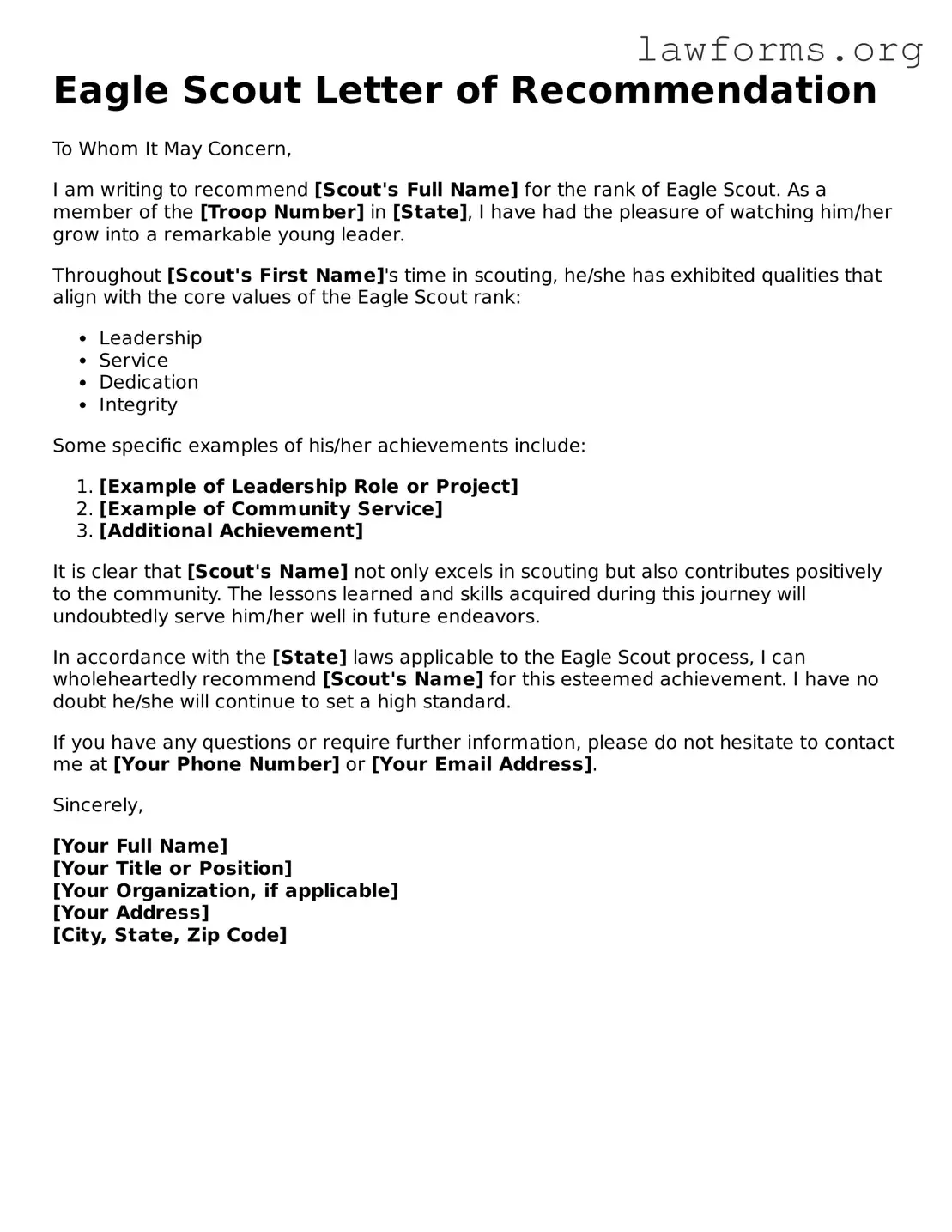Eagle Scout Letter of Recommendation
To Whom It May Concern,
I am writing to recommend [Scout's Full Name] for the rank of Eagle Scout. As a member of the [Troop Number] in [State], I have had the pleasure of watching him/her grow into a remarkable young leader.
Throughout [Scout's First Name]'s time in scouting, he/she has exhibited qualities that align with the core values of the Eagle Scout rank:
- Leadership
- Service
- Dedication
- Integrity
Some specific examples of his/her achievements include:
- [Example of Leadership Role or Project]
- [Example of Community Service]
- [Additional Achievement]
It is clear that [Scout's Name] not only excels in scouting but also contributes positively to the community. The lessons learned and skills acquired during this journey will undoubtedly serve him/her well in future endeavors.
In accordance with the [State] laws applicable to the Eagle Scout process, I can wholeheartedly recommend [Scout's Name] for this esteemed achievement. I have no doubt he/she will continue to set a high standard.
If you have any questions or require further information, please do not hesitate to contact me at [Your Phone Number] or [Your Email Address].
Sincerely,
[Your Full Name]
[Your Title or Position]
[Your Organization, if applicable]
[Your Address]
[City, State, Zip Code]
